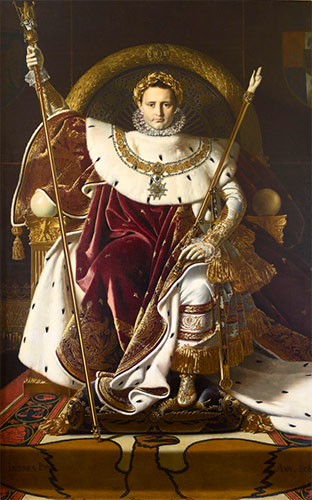Hailed as the preeminent academic painter of his era, Jean-Auguste-Dominique Ingres was the heir apparent of Raphael and Poussin during the late 18th and early 19th centuries. A major exhibition of the master’s work recently opened. Where?
Offering a concise chronological presentation of Jean-Auguste-Dominique Ingres’s (1780–1867) life and career, “Ingres” is a monumental exhibition at Madrid’s Museo Nacional del Prado that is sure to amaze. Featuring works created throughout the master painter’s career, the exhibition “also pays particular attention to his complex relationship with portraiture (characterized by his simultaneous rejection and admiration for it), which is juxtaposed with his ongoing aim of being primarily recognized as a history painter,” the museum states.

Jean-Auguste-Dominique Ingres, “Napoleon I on His Imperial Throne,” 1806, oil on canvas, 260 x 162 cm.
(c) Louvre Museum, Paris 2015
The show is nearly exhaustive, comprising 11 different themes, including A Multi-faceted Training, Informal Portraits & Early Official Portraits, Rome and the Myths of Art, The Classical Challenge, Troubadour, Ingres and the 14th Duke of Alba, Captive Women, New Portraits, Religious Painting, Sumptuous Nudity, and Late Portraits.
“Ingres” opened on November 24 and will be on view through March 27.
To learn more, visit the Museo Nacional del Prado.
This article was featured in Fine Art Today, a weekly e-newsletter from Fine Art Connoisseur magazine. To start receiving Fine Art Today for free, click here.








